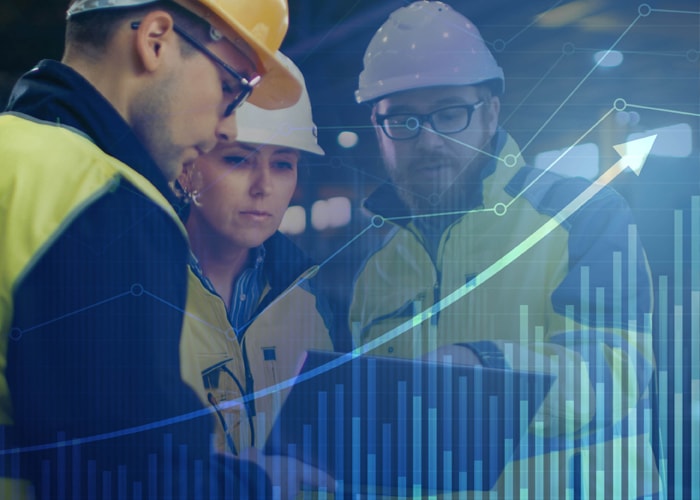Humanizing Your EHS Dashboard
Sponsored by: VelocityEHS
Data Danger
Data for data’s sake is a bridge to nowhere and getting caught up in numbers and percentages is a step in the wrong direction if it dehumanizes the information. Kelci Berndt, safety coordinator for JF Ahern, put it succinctly during her presentation at the recently-held VelocityEHS User Conference Accelerate 2019: “These are people. They’re not numbers, not statistics, not rates, they are people.”For instance, take a look at the number of injuries reported in your dashboard. Each one of those data points represents a real person who got hurt. An injury interrupts or even permanently changes the life of that person in more ways than a chart or graph could ever capture. Think back to the effects of injuries you’ve had, even minor ones, and your perspective clears. Chances are good that the injury also affects more employees than just the one(s) injured, because other employees will likely experience sadness and concern for their injured coworker, who, in many cases, may also be a dear friend.
Similarly, near misses and other incidents, even ones that don’t result in injury or illness, produce anxiety in the workplace that can rob the team of productivity, peace of mind and job satisfaction. A dashboard can show trends, but can’t communicate feelings.
If the number of workplace injuries are on the rise, so is the number and frequency of employees experiencing sadness and concern. If the number of injuries decrease, that’s good news, but it still means that people are getting hurt on-the-job, and, if not responded to and framed properly, a significant toll can be placed on your workplace EHS culture. When we remember that real people are behind those statistics, we can fully understand the true cost of poor safety performance.
Taking Action
Having the right perspective about our EHS data enables us to unlock its maximum benefit to our EHS culture. The true value of a dashboard is evident when it makes our most important EHS performance metrics immediately visible and accessible so that we can act. “Our dashboard enables us to see what risk factors are impacting our manufacturing associates and what commitments have been made to address the risk. The ease of access to this information ultimately empowers leaders to make data-driven decisions while providing transparency across the different teams,” explained Michael T. Mauro, divisional ergonomics & error proofing process champion for W. L. Gore & Associates, Inc. Experts agree: data helps us better identify and manage issues and improve the safety of our workers. When we identify each data point as an individual life, we have a greater responsibility to act.A great example of this is software that tracks training. In addition to providing a high-level view of training performance, like how many people attended training and when, it becomes transparent who hasn’t. Who are the flesh and blood employees most at risk because they haven’t completed a primary EHS task? If that information never goes beyond the level of color-coded numbers on a screen, then the software and dashboard has not done its job.
We see an additional benefit if, while leveraging our EHS data to drive positive safety performance, we make the dashboards and data visible to the entire workforce. As it turns out, workers really like having access to this information, especially if it shows them that management is actively working to address workplace EHS issues. This visibility increases employee “buy-in” and makes them more likely to participate and provide useful feedback. This increased engagement leads to further improvements in performance too. Once the “good news” is shared, more employees will engage in the initiative. This starts the cycle of continuous improvement and once it gets going, it’s sustainable.
Improving Human Relationships in the Workplace
Sharing information about the performance of our EHS programs fosters an environment of openness and honesty with our people. In other words, maintaining an attitude that metrics are about people doesn’t only lead to better data management, but to better human relationships. That, of course, is the essential ingredient — because without that, the best-intentioned policies and procedures will fall flat. Conversely, with greater employee engagement, we can drive better EHS performance.Another important point to remember here is that the influence flows both ways. Better data leads to better workplace engagement, and better engagement leads to better data. As we build trust and foster better relationships, we’ll be able to observe that in our EHS metrics. For example, when we look at our dashboard and find that the number of safety suggestions is going up, or that the time taken to report incidents is going down, we’re not just seeing quantitative trends. When we see an increase in the number of completed action items, or a decrease in the time taken to close them, we’re not just seeing statistics. We are literally witnessing the building of better interpersonal relationships and the impact of those relationships, in real-time.
So, how do we get there? As we change our perspective about what our dashboard actually means, we also need to change our perspective about the software behind it. If we value trust and visibility, our EHS software solution should put our metrics in front of as many people as possible, with real-time access available from any computer or mobile device. The best way to boost engagement is to use software that is flexible, simple, with an intuitive design and with built-in calculation features (to help with unit conversions). These features make it easy for the workers to use, thus reducing implementation time.
What’s the takeaway? We need to humanize the dashboard — make it about people. Once we put a name with a number, we’ll build more honest and open relationships, and ultimately create a safer workplace.
Topics:
EHS Compliance EHS&S Strategy Health & Safety Metrics & Reporting Safety Culture Safety Metrics Safety Programs
Tags:
Ergonomics Sponsored
About the Author

Phil Molé
VelocityEHS
Phil Molé is an EHS & Sustainability Expert for VelocityEHS. Phil speaks at numerous conferences and organizations, and often presents webinars on EHS management topics.
He previously worked as a Global EHS Coordinator for a large manufacturing company, where he developed and facilitated trainings on a variety of subjects and managed the company’s ISO/OHSAS certifications.
Phil has also worked as an environmental and safety regulatory consultant for approximately 13 years.
Phil's professional accreditations and memberships include: National Institute of Occupational Safety and Health (NIOSH) Traineeship from 1995 to 1997, American Society of Safety Professionals (ASSP), National Association of Environmental Managers (NAEM), OSHA 30-hour training (2012) and ISO/OHSAS Internal Auditor training (2012).
Phil has received a Bachelor of Science degree in Chemistry from DePaul University in Chicago, Illinois, and a Master’s in Public Health (MPH) in Environmental Health Sciences from UIC in Chicago, Illinois.
He previously worked as a Global EHS Coordinator for a large manufacturing company, where he developed and facilitated trainings on a variety of subjects and managed the company’s ISO/OHSAS certifications.
Phil has also worked as an environmental and safety regulatory consultant for approximately 13 years.
Phil's professional accreditations and memberships include: National Institute of Occupational Safety and Health (NIOSH) Traineeship from 1995 to 1997, American Society of Safety Professionals (ASSP), National Association of Environmental Managers (NAEM), OSHA 30-hour training (2012) and ISO/OHSAS Internal Auditor training (2012).
Phil has received a Bachelor of Science degree in Chemistry from DePaul University in Chicago, Illinois, and a Master’s in Public Health (MPH) in Environmental Health Sciences from UIC in Chicago, Illinois.




